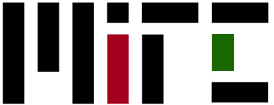4 Things to get started (Web Development 101)
|
As with any industry, you need the necessary tools and intangibles to even get started. There are many ways an individual may become a Web Developer, there’s a natural progression (you have IT Background: help desk, tech support, project management, tester, etc.), cross-over (you’ve done some programming maybe SQL, VBA, etc.), ‘side-way’ ( you’ve been handed a CMS or required to fix something that required programming), or you’re a complete newbie. Never the less, the basic foundation for Web Development is understanding what Web Development really is, how it works, and what’s involved. Before you start, here’s a crash course on Web Development. In simple terms, there’s a Web Page, Web Server, Web Browser. The Web Page is the document that is hosted on a Web Server and viewed in a Web Browser. For comparison, A track is a media file that is saved on a compact disc and accessed (heard) through a CD player. The Web Page side is where the magic happens in regards to Web Development. In a nutshell, Web Pages consist of HTML, CSS, and JavaScript. HTML is the base, that all pages require. CSS is the ‘look and feel’ of a web page, and JavaScript (not to be confused with Java) manipulates the HTML and CSS. Dynamic Web Pages and Server-Side languages are what separates Web Development from Web Design. Web Designers typically utilize HTML and CSS to create a web site. A Web Developer then turns a Static Web Site into a Dynamic (programmatically driven) Web application. This is done either by using JavaScript or a Server Side language such as Ruby, C#, or Java. I advise navigating the web and also following this HowStuffWorks example to better understand the nuts and bolts of the Web. And here’s are my 4 elements to get you started up: 1. Start with the end in mind What exactly do you want to do? Are you looking to develop as a hobby? Are you looking to start a new career as a Developer? Are you wanting to start a project? All these are basic questions that you need to answer before proceeding. This will provide the direction that’s needed to complete the next steps. For example, if you’re looking to pick up programming as a hobby, you may want to start with something fun, easy to pick up, and has a large community. If you’re looking for a job, then you may want to find what’s your ideal work environment (industry) and understand what skills are needed for that industry. Research task for job seekers: Go to a job site like, Dice.com and enter in a programming language to see the demand in your area. 2. Ensure you have a good PC Having a high performing (good processing, and a good amount of RAM) PC that is reliable is critical to development. A good investment will give you performance that will last a few years. Often times you need to run multiple programs at once, need the ability to set up a local server, and process and debug chunks of code without lag. It does not have to be a tier-1 gaming machine, but you do want some solid hardware to efficiently support your software and rigorous use. I don’t advise a Tablet or Net Book. But I do recommend a Laptop or Desktop depending on your preferences. 3. Get an IDE Based on your goals outline in Step 1, you need to download a few different IDEs to see which works best for you and gives you the most bang for what you are looking to achieve. Most Professional Windows Technology developers use Visual Studio. I also use Web Matrix for small, light weight projects (WordPress, other CMSs, Small Web Sites, etc.), I use DreamWeaver when I am doing Design, and NetBeans when I need to work with PHP. 4. Online Tutorials (Education) The cool nowadays is that there’s dozens of sources to learn how to program (for Web Development). I would advise learning HTML, CSS, and JavaScript first. You can sign up for email tutorials or watch video tutorials for free. You can go to About.com or just do a search to ‘learn HTML’. Secondly, I would say based on your response to Step 1, learn a server-side language. There’s CodeAcademy.com, Asp.Net, Code.org and of course YouTube. Don’t worry about starting with something and having to change directions, it’s normal. It’s also normal to know, or be familiar with, multiple languages. Lastly, I have heard great feedback from PluralSight but there’s a fee for it.
“This is crazy, I’m on the right track, I’m finally found/ |
